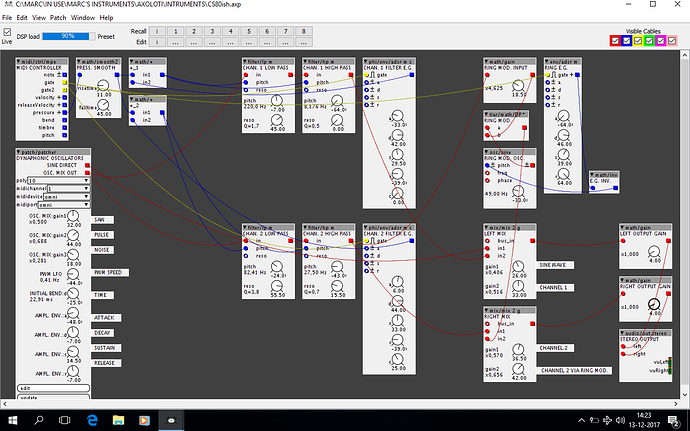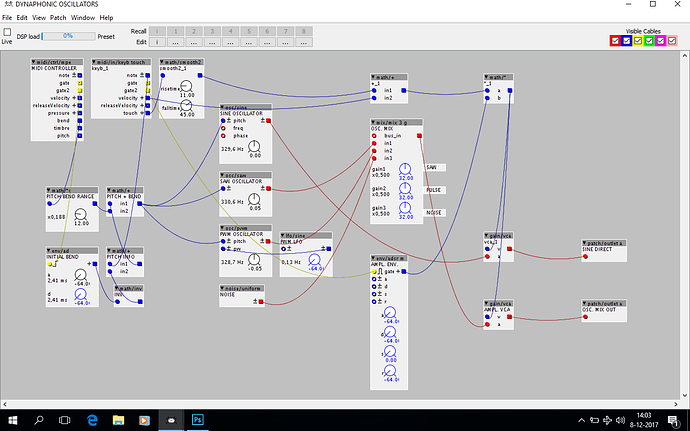Hi guys,
Want to own a real Yamaha CS80, that classic everybody drools on about?
Well don't! I own one and I constantly live in mortal fear of it breaking down.
I have however learned an awful lot from the beast and it is still my personal benchmark for what a good analog polyphonic synthesizer should be capable of.
So is it any wonder my main Axoloti project (see Holy Grail) contains quite a few CS 80 genes? And since I started the project with working out how to build an analog version first the similarities became even bigger (see Poly Power User Tips). So much so that creating a functional CS80 copy (sort of) became an almost unavoidable next (side)step.
Here are the screenshots:
And here's the file:
CS80ish.axp (18.9 KB)
I hope you like it.
Some remarks:
Since the Axoloti has not enough internal processor power it can alas not be a totally integral polyphonic CS80 (see points below) but it is close enough for most purposes.
The biggest differences when compared to the original are:
- 10 paraphonic oscillators (so 2 more voices to play with then on the original. Hurray!)
- Because of the paraphonic approach there are however some triggering issues. Axoloti's option to provide non-retriggering when playing legato (binding notes) however goes far in compensating this.
- Only 2 filters in series per channel so no full filter treatment per voice (It's paraphonic you know!).
- Only 1 oscillator mix per channel (on the CS80 each channel has it's own independent oscillator mix. In stead you get detuning per oscillator / waveform (so you do at least not need a second set for that) and full level-mixing in stead of only switching waveforms on and off.
- For true CS80 fans: This instrument also provides poly aftertouch on oscillator volume. Since playing the aftertouch will also monophonically open the filters at the same time the difference to real poly aftertouch is remarkably small (thanks to @SmashedTransistors for his help with implementing this!).
- To avoid the oscillator subpatch surface becoming too cluttered I have left some controls hidden within the subpatch itself. These are:
- Oscillator detuning
- Initial pitch (swoop) attack time
- Pitch bend range
- I have consciously decided against sending everything through a stereo chorus as on the original because one then still has the option to treat the “channels” individually after they leave the Axoloti (One of the few things the CS70M really did better then the CS80) but even without extra effects it can be used for some interesting true stereo spreading.
The sound that is set up on the downlaod is rather typical for a CS80. There is the “Emersonesque” attack swoop per note but also listen to the more subtle speed changing modulations created by the ring mod when a note is held longer, proving that a ring mod can be used for much more then screaming wails.
By the way: the ring mod envelope is full ADSR in stead of an AR only as on the real thing. In other words: Some you loose. Some you win.
Have fun and feel free to mess around with it as much as you like. Since it 's a quite reasonable polyphonic compromise anyway it should also be a good starting point for other projects. So knock yourself out if you want to use it to build your own Axoloti Prophet 5 on in stead.
Finally: Since the Axoloti's output signals are not that strong because of technical limitations I have added 2 output gain modules. In the download they are set to factor 1.0. Treat these with care if you do not want to end up with bleeding ears!
Marc
(Remark: To keep this post up to date but at the same time avoid unnecesarry confusion for people who see this for the first time I have updated it, including the download, on 08 December 2017 and 13 December 2017)









